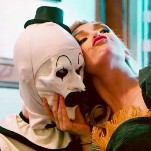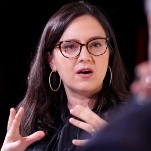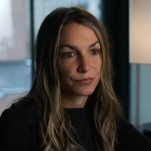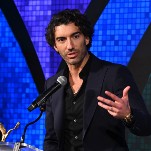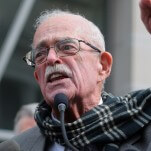BPM's Director On the Thrill of Activism, the Pleasure of Sex, the Tragedy of AIDS
EntertainmentFrance’s Oscar entry BPM (Beats per Minute) pulsates with the sheer fun of activism. Director/co-writer Robin Campillo based it on his time in the AIDS activist group ACT UP Paris, and the film captures arguably the darkest period of the epidemic, the time just before the advent of life-saving protease inhibitors in the ’90s. BPM’s sprawling narrative treats us to extended ACT UP strategy meetings (so layered, impassioned, and realistic they seem cut out of a Frederick Wiseman documentary), portrayals of the type of civil disobedience the activist group enacted (a raid of a pharmaceutical company, throwing balloons full of fake blood at politicians), and the group’s off-duty time spent dancing to house music in Paris discothèque. At BPM’s heart is the romance between HIV-positive ACT UP fixture Sean (Nahuel Pérez Biscayart) and chiseled newcomer Nathan (Arnaud Valois), who’s HIV negative but loves Sean fearlessly.
In an interview a few weeks ago, Campillo told me that he based Nathan on himself. We discussed what AIDS did to his conception of sex as a young man, his unabashed portrayal of gay sexuality on screen, and why he rejects the notion of “universality” as it applies to his film. A condensed and edited (and slightly spoiler-y) transcript of my conversation with the French director is below.
ROBIN CAMPILLO: I was 20 years old in ’82 when the epidemic started in the newspaper in France. That was horrible. I was a young gay guy and all these newspapers were talking about how most gay men were going to die of this disease. I was so afraid of that. I always wanted to be a director so I went to cinema school in ’83. Because I was so paralyzed by this epidemic, it seemed like cinema was useless. Especially all the film directors that I loved—many of the guys from the French New Wave or [Luc] Besson or these kind of new French directors. I realized that in their cinema, there was no disease. They were only healthy people. Cinema was useless to express what was going on. When Nathan in the film is talking about his past and his first boyfriend, that’s exactly my story. That’s me talking directly to the audience.
In ’92, I went to ACT UP and I became a militant for many years. Strangely, I think I was recording everything when I was in this group. I was working unconsciously. After my first film in 2004, I tried to write a script about AIDS but AIDS is not an object of cinema by itself. You have to find something. I didn’t find what I wanted to talk about, what I wanted to shoot. Then I realized it was in front of my eyes, what I wanted to talk about: This moment where gay people stopped being victims of the epidemic and became quite the evil fags and shocked society and changed the representation of the disease. It took me all this time to realize something which is obvious.
AIDS is not an object of cinema by itself. You have to find something.
Did you have an opinion on the movies that have previously handled AIDS?
In The Celluloid Closet, Harvey Firestein says something that I love: Even if a [gay] character is a little bit of a caricature, at least he was gay. I have the same feeling about AIDS. OK, some films were stupid, but they were talking about AIDS. We had a few bad films in France, but even Philadelphia I was buying it all. There are a few that I love. I like very much Silverlake Life: The View from Here and I saw United in Anger, which is on ACT UP. I didn’t see How To Survive a Plague. I was starting to work on my film and I was afraid of being influenced. I didn’t do the script out of documents. I did the film out of only my memories. I searched from some documents about laboratories to be sure I wasn’t saying stupid things. But mostly, it was my memories. It’s like fantasy. It’s an interpretation of the reality. It’s not historical exactly.
How did the emergence of AIDS during your coming of age shape your relationship with sex?
It changed a lot of things. I was so afraid that I stopped having sex in ’83, and I go back to sex in ’89.
-

-

-

-

-

-

-

-

-

-

-

-

-

-

-

-

-

-

-

-

-

-

-

-

-

-

-

-

-

-

-

-

-

-

-

-

-

-

-

-

